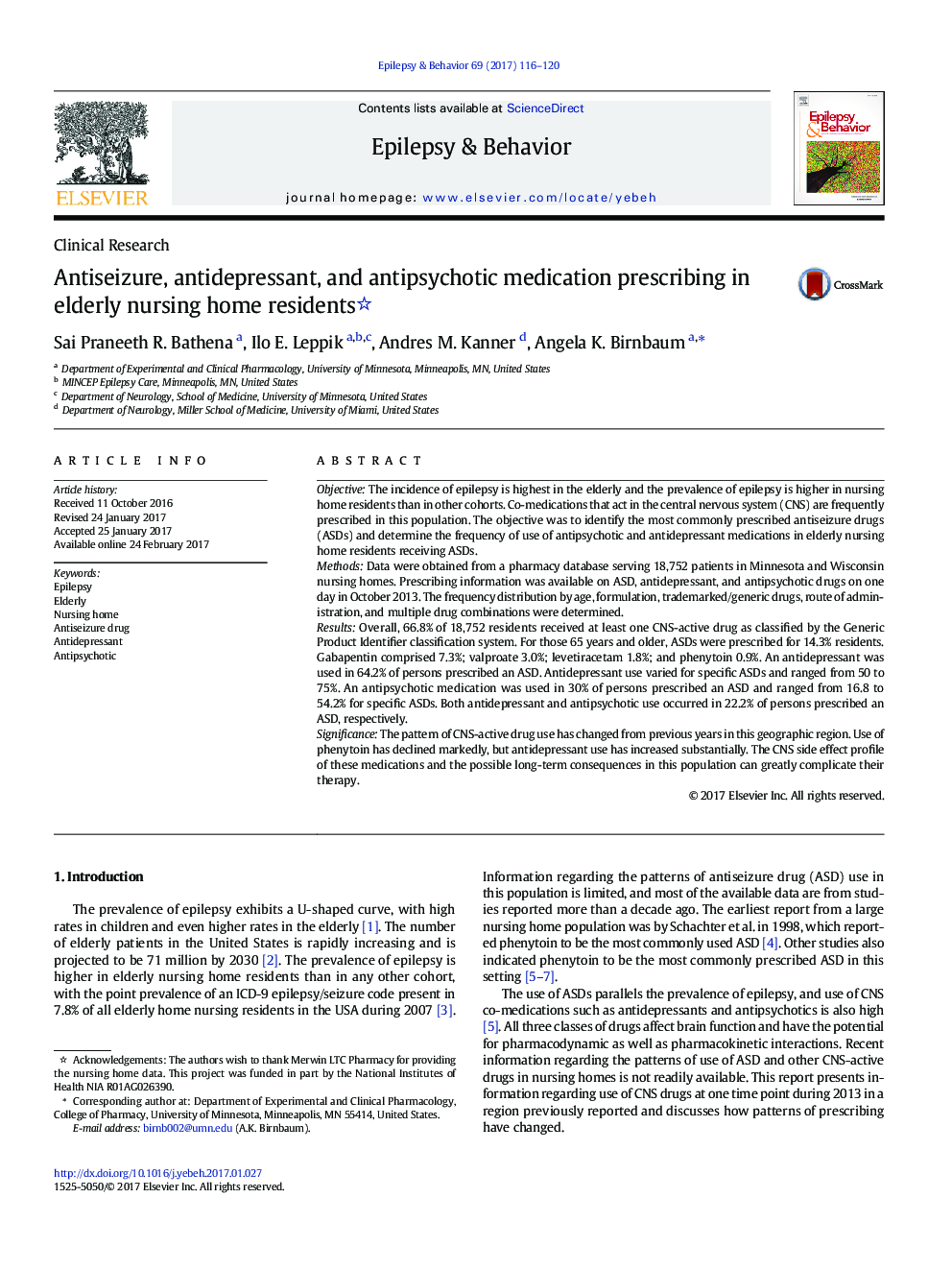| کد مقاله | کد نشریه | سال انتشار | مقاله انگلیسی | نسخه تمام متن |
|---|---|---|---|---|
| 5628409 | 1579823 | 2017 | 5 صفحه PDF | دانلود رایگان |
ObjectiveThe incidence of epilepsy is highest in the elderly and the prevalence of epilepsy is higher in nursing home residents than in other cohorts. Co-medications that act in the central nervous system (CNS) are frequently prescribed in this population. The objective was to identify the most commonly prescribed antiseizure drugs (ASDs) and determine the frequency of use of antipsychotic and antidepressant medications in elderly nursing home residents receiving ASDs.MethodsData were obtained from a pharmacy database serving 18,752 patients in Minnesota and Wisconsin nursing homes. Prescribing information was available on ASD, antidepressant, and antipsychotic drugs on one day in October 2013. The frequency distribution by age, formulation, trademarked/generic drugs, route of administration, and multiple drug combinations were determined.ResultsOverall, 66.8% of 18,752 residents received at least one CNS-active drug as classified by the Generic Product Identifier classification system. For those 65Â years and older, ASDs were prescribed for 14.3% residents. Gabapentin comprised 7.3%; valproate 3.0%; levetiracetam 1.8%; and phenytoin 0.9%. An antidepressant was used in 64.2% of persons prescribed an ASD. Antidepressant use varied for specific ASDs and ranged from 50 to 75%. An antipsychotic medication was used in 30% of persons prescribed an ASD and ranged from 16.8 to 54.2% for specific ASDs. Both antidepressant and antipsychotic use occurred in 22.2% of persons prescribed an ASD, respectively.SignificanceThe pattern of CNS-active drug use has changed from previous years in this geographic region. Use of phenytoin has declined markedly, but antidepressant use has increased substantially. The CNS side effect profile of these medications and the possible long-term consequences in this population can greatly complicate their therapy.
Journal: Epilepsy & Behavior - Volume 69, April 2017, Pages 116-120
